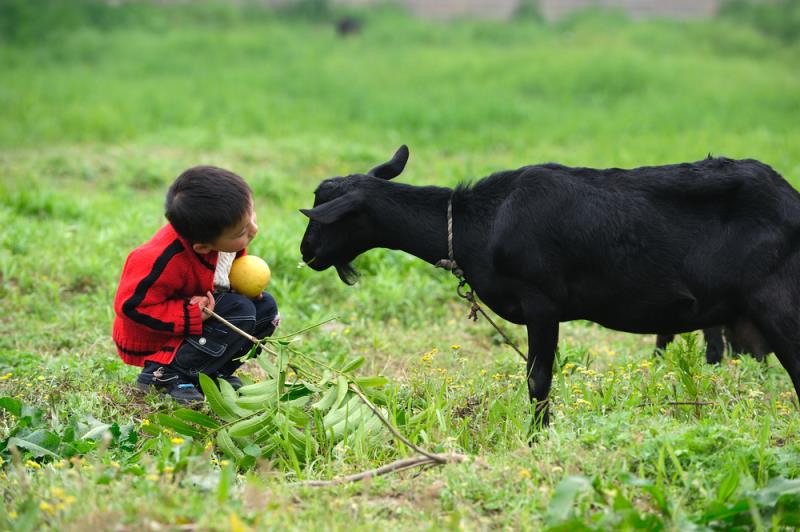
Farm dust exposure may reduce children’s risk of asthma through an anti-inflammatory effect conferred by TNF-α–induced protein 3 (TNFAIP3) expression, according a recent study conducted by researchers at the Chinese University of Hong Kong (CUHK) in collaboration with experts from Germany, Finland and mainland China.
In the study, asthmatic children from both Germany and Hong Kong were found to express lower levels of TNFAIP3. The results also showed that TNFAIP3 expression could be restored through farm dust exposure, with concurrent reduction of proinflammatory gene expression. [J Allergy Clin Immunol 2019;144:1684-1696.e12]
“The anti-inflammatory capacities shown after dust stimulation may indicate a potential therapeutic role for farm dust exposure. We believe that exposure to farm environments is beneficial for children and potentially for allergy prevention, and is even able to reduce the increased inflammation in patients with allergic asthma. This may represent a promising future option for asthma prevention and treatment,” said investigator Professor Gary Wong from the Department of Paediatrics, CUHK.
The significant reduction in TNFAIP3 expression and increase in TLR4 expression in peripheral blood mononuclear cells (PBMCs), demonstrated in asthmatic urban children from Germany (p=0.07 and p=0.00, respectively) and Hong Kong (p=0.042 and p=0.284, respectively), indicate impaired negative regulation of the inflammatory NF-ƙB pathway in asthmatic children across different urban areas.
Significantly lower levels of all investigated gene expression (p≤0.002) were also found in children in rural China compared with those from urban areas. Nonetheless, the capacity in increasing anti-inflammatory TNFAIP3 expression and decreasing proinflammatory TLR4 expression was preserved after ex vivo lipopolysaccharide (LPS) (endotoxin) stimulation.
In asthmatic children in Germany and China, similar ex vivo stimulation with farm dust exposure and LPS led to restoration of TNFAIP3 expression to levels observed in healthy subjects. The ex vivo stimulation also resulted in increased expression of anti-inflammatory genes and decreased expression of proinflammatory genes within the NF-ƙB pathway in both healthy and asthmatic German children, supporting the immuno-modulatory characteristic of environmental dust.
Consistent results demonstrated in dendritic cells (DCs) confirmed the findings obtained from PBMCs, underlining the regulatory role of DCs in the context of environmentally mediated asthma protection.
Significantly decreased TNFAIP3 expression and dysregulated NF-ƙB signalling gene expression at birth (p=0.037) were shown in newborns with subsequent asthma, suggesting TNFAIP3 as a potential biomarker for asthma development.
In the study, researchers analyzed data from a representative sample of 250 of 2,168 healthy and asthmatic children residing in urban and rural/farm environments from Europe and China selected from two cross-sectional studies (CLARA/CLAUS and TRILATERAL) and two prospective birth cohorts (PASTURE/EFRAIM and PAULINA/PAULCHEN). PBMCs were stimulated ex vivo with dust from “asthma-protective” farms or LPS, with assessment of NF-ƙB signalling-related gene and protein expression. Multiplex gene expression assays were used for isolated DCs of school children and in core blood mononuclear cells from newborns.
There has been a continuous rise in the prevalence of asthma, particularly in urban areas of westernized countries, whereas children from rural areas in Europe and China who reside in farming environments with continuous exposure to microbial components are protected. [N Engl J Med 2006;355:2226-2235; Nat Rev Immunol 2010;10:861-868; N Engl J Med 2002;347:869-877]
Inflammatory responses, such as the NF-ƙB signalling pathway, are activated by recognition of LPS by TLR-4 expressed on innate immune cells. These processes are tightly regulated with endotoxin tolerance controlling excessive inflammation through a mitigated response to repetitive LPS stimulation, suppression of proinflammatory signalling and upregulation of anti-inflammatory processes. [J Leukoc Biol 2017;101:107-119; Trends Immunol 2009;30:475-487]